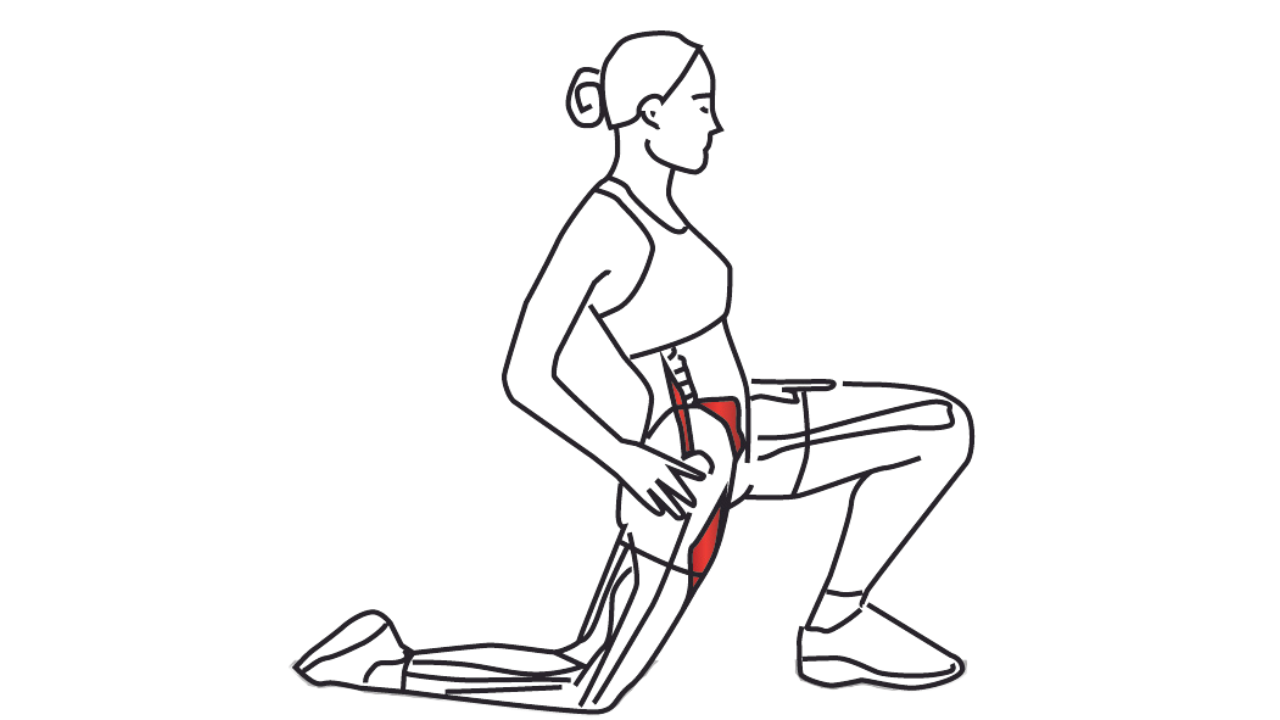Trigger Point Therapy - Hip Pain and Dysfunction
Stuart Hinds - Hip Abduction Assessment
Learning to Release the Hip Holding Patterns
I've spent the best part of 25 years working predominantly with elite athletes. Just about anyone who knows me will tell you, I've been obsessed with hips for most of that time!
Hip Pain and Dysfunction
Hip pain and dysfunction are often challenging for the therapist and as I gained experience over the years, and had more and more success in treating hips, I begun to feel certain that sequence, the order in which the treatment is applied, was making a huge impact.
This drove me to hunt down and define an effective and autonomously reproducible treatment protocol for the hip.
NAT "Thinking"
It was whilst working at the London Olympics in 2012, that I started to formulate the protocol in earnest.
I had been working with the NAT soft-tissue protocols for shoulders for many years and it was whilst working with these protocols that I had a light bulb moment!
Trigger Points as Inputs to the Nervous System
My NAT training and experience has taught me to regard trigger points not just as bands of muscular dysfunction, but as “inputs” to the spinal cord and central nervous system.
With NAT, inputs are made via the trigger points in repeatable sequences, which always include the manipulation of trigger points in agonists and antagonists.
I've also learned the value of limiting the number of these inputs to an absolute and purposeful minimum.
When we succeed in working out the "code", the nervous system responds to these input sequences by releasing the “holding pattern,” and normalizing motor unit output.
So, presented with more than a fair number of hips to treat at GB 2012, I started to re-double my efforts to identify and understand more about the holding patterns.
Hip Holding Patterns
The most common pattern is the lateral hip pain pattern. This is typically associated with non-specific bilateral lower back pain /stiffness and insentient hamstring tightness. This is something that is quite commonly recognized and understood.
On palpation excessive tension and sensitivity to the gluteus medius/minimus can be felt. This pattern is also consistent with chronic overloading.
In the past, I had found that treatment to lower back tissues helped relieve the symptoms but these improvements were short-lived.
When these cases re-presented they often became chronic, with an ongoing cycle of continued overload and restriction.
Hip Assessment
By studying the results of passive hip abduction assessment, extension, internal rotation range-of-motion, we were able to clearly identify the following holding patterns:
- Hip abduction indicating Adductor Magnus hyper tonicity.
- Hip extension indicating iliopsoas hypertonicity just superior to the lesser trochanter attachment.
- Hip internal rotation restriction was individually present in 4 common regions, adductors, Tensor fascia latae, hip flexor or deep external rotators.
Unlocking the Hip
The first major step was when we realized that the tonicity housed in the adductor muscles was the key to the gluteus overload.
Once this is cleared with trigger point manipulation, the gluteus overload is quickly and simply resolved.
Similarly, with the hip extension restriction. Once the hip flexor attachment trigger point in quadratus femoris is deactivated, the hip becomes free to move into extension without restriction at all.
The final step is then to address internal rotation restrictions.
These vary from client to client, sometimes presenting as a simple restriction, other times they can be multiple and slightly more complex.
Over time, we've documented the approach to deal effectively with the majority of these variations.
Results
Implementing this approach has been delivering consistently positive results, in many clinics and treatment rooms, evident with both patient feedback and the clear changes in tissue tone.
Applying the algorithm to the treatment of our athletes has been transformative to say the least.
We now spend less time treating what were remarkably frequent complex hip restrictions, as following treatment they now consistently present less with overload, pain and fatigue of the hip.
Stuart Hinds is a lecturer at Victoria University, Melbourne, where he teaches Soft Tissue Techniques.
Stuart works primarily with elite athletes and has been part of the Australian Olympic manual therapy team for over 20 years (Sydney 2000, Athens 2004, Beijing 2008, London 2012).
In 2016, Stuart received a lifetime achievement award from the Australian Association of Massage Therapy.
Find a Trigger Point Professional in your area
Hip Pain and Dysfunction - Online Course
Dry Needling for Trigger Points
Certify as a Trigger Point Therapist
Recommended Trigger Point Therapy Courses:
This trigger point therapy blog is intended to be used for information purposes only and is not intended to be used for medical diagnosis or treatment or to substitute for a medical diagnosis and/or treatment rendered or prescribed by a physician or competent healthcare professional. This information is designed as educational material, but should not be taken as a recommendation for treatment of any particular person or patient. Always consult your physician if you think you need treatment or if you feel unwell.


Learn More for Less

Unlimited access to all CE courses for just $19.95/mo




